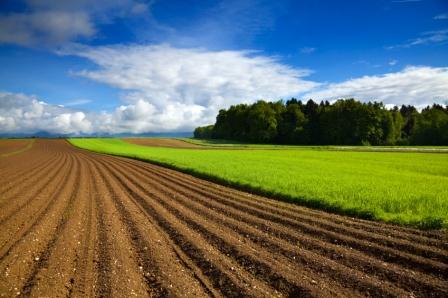EU starch industry contribution towards the commission’s consultation on cap towards 2020
Caveat:
The European starch industry is pleased to contribute to the Commission’s consultation on the CAP towards 2020 with items of direct relevance to its competitiveness. For this reason, the European starch industry focuses its contribution on questions no. 1 to 3 as outlined in the consultation document for impact assessment, and will be pleased to share specific requirements and industry facts and figures directly with the Commission services in the course of February 2011. The AAF is registered with the ETI Register of Interest Representatives under no. 18031092597-49.
Question 1: are the policy scenarios outlined consistent with the objectives of the reform? Could they be improved and how?
The items raised in both the Commission’s communication and consultation documents are relevant to the achievement of the objectives of the reform but they lack a certain degree of details in the implementation of concrete measures.
Both documents overlook the competitiveness of the first transformation industry, which is composed of increasingly diversified and complex sectors that manufacture a wide range of added-value and multi-functional products and constitutes the first outlet of agricultural products.
In 2009, the European starch industry used about 21.4 million tons of agricultural raw materials (split into 13.9 million tons of cereals and 7.5 million tons of starch potatoes) for a production of about 9.3 million tons of starch products. The versatility of starch products is such that they are used as ingredients and functional supplements in a vast array of food (about 60%) and non-food (about 40%) applications. Aside from its core products, the European starch industry also supplies approximately 5 million tons of co-products to the feed sector. As a first transformation sector, it has a direct link with EU agriculture, and therefore has a key role to play in the future of the CAP and the Europe2020 strategy, particularly in the development and diversification of rural areas.
Because the European starch industry uses mostly EU grown crops, it considers that the CAP pillars are complementary. It fully supports a first strong pillar as the core element of the CAP towards 2020 to help create stability of farmers’ revenue, of production and thereby of supply.
The European starch industry acknowledges the efforts made to take account of all three pillars of sustainability from an economic, environmental and societal prospect. The European starch industry also supports the recognition that CAP towards 2020 reform goes beyond food needs with its focus on the development of non-food uses and considers that innovation incentives are needed to maximise the use of agricultural raw materials going to food, feed and non-food applications.
However, all policy scenarios lack concrete details of how to ensure that the European starch industry has access to agricultural raw materials at competitive prices and in sufficient quantities and to deal with extreme price volatility; two items of direct relevance to the competitiveness of the European starch industry.
In this context, the European starch industry supports the Primary Food Processors’ contribution and emphasizes that the CAP towards 2020 should take the following issues into consideration: a holistic and coherent approach with other policy areas, the 2010-2015 trade policy, the environment policy in general and that of the Emission Trading Scheme in particular.
Question 2: are there other problems apart from those set in the problem definition section of this document that should be analysed when considering the architecture of the CAP in the post 2013 period? What causes them? What are their consequences? Can you illustrate?
While the Commission’s Communication acknowledges the role played by the food processing industry in contributing towards territorial balance and its “strong linkages” to agriculture, it does not take into consideration its specific needs as first outlet of agricultural products. In fact, the items listed below directly affect the competitiveness of the European starch industry and should be further considered:
(a) The access to agricultural raw materials (mainly maize, wheat and starch potatoes) in sufficient quantities and at competitive prices;
(b) The fact that the European starch industry’s competitiveness is impacted by the isoglucose production quota; this limits its possibilities to build economies of scale;
(c) The detrimental impact of the CAP Health Check on the European potato starch sector (see point 2a below); and
(d) Enhancing policy measures conducive to creating new outlets for renewable raw materials into bio-based products to respond to climate change challenges (see point 2b below).
Question 3: does the evolution of policy instruments presented in the policy scenarios seem to you suitable for responding to the problems identified? Are there other options for the evolution of policy instruments or the creation of new ones that you would consider adequate to reach the stated objectives?
In the absence of concrete details for measures to be proposed, it is difficult to answer this question, particularly with regards to the “other problems” raised under question 2. However, the AAF would like to put forward the following suggestions.
1. Evolution of policy instruments[spacer size="10"]
a. The future of the sugar regime in the framework of CAP towards 2020[spacer size="10"]
When addressing the future of the sugar regime, the main priority of the European starch industry is the abolition of the production quotas whilst maintaining a level playing field, and an equal treatment of carbohydrates to supply the food and non-food sectors, such as the industrial and new green chemistry applications.
The European starch industry asks to refrain from continuing to take measures consistently favouring one industry at the expense of the other and to give a chance to European production instead of imports.
b. On the cereal market:[spacer size="10"]
A balanced combination of import, export and production policies is needed, in order to ensure that the European starch industry has access to raw material supply in sufficient quantities and at competitive prices, such as:
[list style="arrow"]
- The introduction of safety net mechanisms for farmers to be triggered under exceptional circumstances in order to cushion the extreme volatility of prices.
- In cases of shortages, the facilitation of imports for certain raw materials.
- The inclusion of the specificities of the European starch industry in the revision of the MiFID (the Markets in Financial Instruments Directive): starch operators need efficient functioning and affordable access to futures markets in agricultural commodities.
- The maintenance of the system of export refunds whilst the price gap between the EU and the world market remains, particularly in the framework of a failure of the Doha Development Round of the WTO.
- To respond to deficits in cereals markets, the European starch industry support continuation of the current import system for maize, i.e. a system based on a price that is only used as a reference for the calculation of the minimum import price for cereals. The current system for maize maintains both an EU protection and the possibility of importing raw materials from third countries when needed.
- A solution to the Low-Level Presence (LLP) of unauthorized GM-events and communication to improve consumer understanding of GMOs.
- An improvement of the current regulatory framework through its simplification and taking into account sound scientific basis for regulatory decisions as well as the industrial practicalities involved in implementation (e.g. pesticides). A holistic approach should be taken.
- The absence of any market measures favouring one sector over another (sugar versus isoglucose).
[/list]
2. Creation of new policy instruments[spacer size="10"]
a. In the potato starch sector:[spacer size="10"]
Because the potato starch industry is closely linked to farmers and essentially organised as farmers’ cooperatives, it plays an essential role in the rural economy, the reinforcement of the agricultural structure and that of the territorial cohesion. Indeed, it involves about 15.000 farmers and 4.100 direct employees who have in those rural areas only few alternatives.
The impact of the CAP Health Check will be detrimental: all support and market instruments of the current potato starch regime will be eliminated in July 2012, confronting a highly-regulated sector of the agro-industry with the dynamics of an entirely free market overnight.
The potato starch sector is characterized by many particularities that make it a very special sector with specific opportunities and needs. This is the reason why it deserves particular attention.
b. Green chemistry and the development of bio-based products:[spacer size="10"]
The European starch industry would like to thank the Commission for recognizing the relevance of high value-added bio-based products and their contribution to a smart and sustainable growth in the EU. Indeed, producing bio-based products in integrated bio-refineries brings economic, environmental and social benefits and improves the EU sustainable industrial production .
Starch bio-based products go beyond traditional energy and bioplastics products. Because starch and starch derivatives are renewable and biodegradable, they have been used, for the last 30 years, in bio-based products in the fermentation, chemical, cosmetics, textile, paper, plastics and detergent industries.
In the framework of the Commission’s consultation on CAP towards 2020, the European starch industry emphasizes that in order to contribute actively towards EU’s challenges; it must secure its raw materials in sufficient quantities and at competitive prices.
The European starch industry believe the EU should reflect on specific incentives to encourage the use of EU-grown renewable raw materials into green chemistry applications at EU level and build on a number of initiatives taken worldwide in this field. This is particularly important in contributing towards the Europe 2020 strategy and the forthcoming communication on Knowledge Bio-Based Economy (KBBE).

